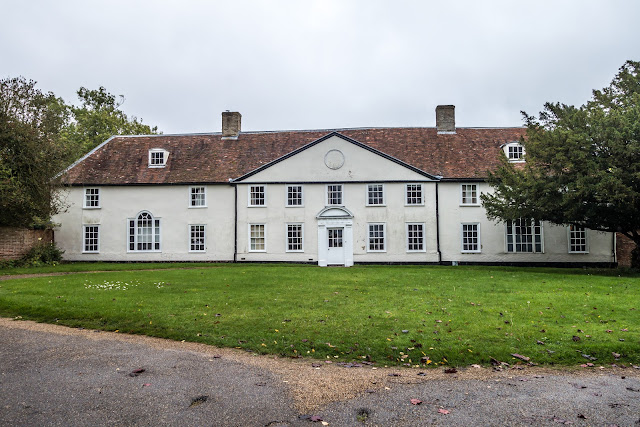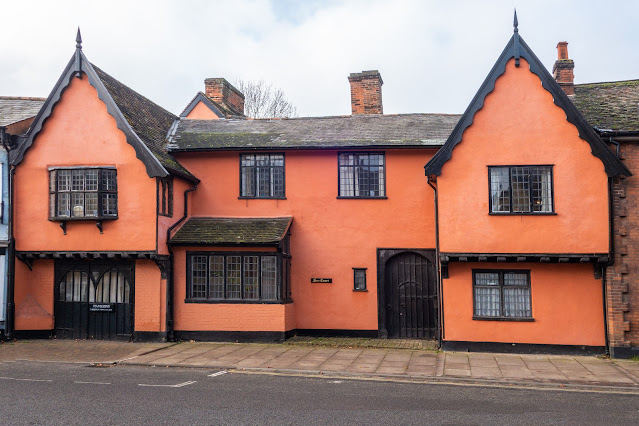Wingfield - a short visit
The story of Wingfield, Suffolk, is the story of two powerful families; the Wingfields and the De la Poles, Earls of Suffolk. The church of St Andrew nextdoor is tied to both families.
St Andrew's was begun in its present form by Sir John de Wingfield in 1362, as a collegiate church, that is, administered by a college of priests rather than placed under the care of a rector. Sir John's tomb lies within the chancel that he built, and there are later memorials to generations of Wingfields and de la Poles.
Wingfield College is now a private family home. But its history goes back over 650 years. It has kept the name of college because it is the remnant of the chantry college founded by Sir John de Wingfield in 1362. Sir John was a soldier of high reputation in the reign of Edward III, and Chief Counsellor of the Black Prince. In 1355 he accompanied him to Languedoc, and some letters of Sir John’s written during the campaign still survive as important records of the War. He fought at the Battle of Poitiers in 1356 and made a fortune from ransom money, by selling the captured members of the French aristocracy.
In the church there are in fact three outstanding tombs to be seen. The earliest one is of Sir John Wingfield himself, whose widow Alianore carried out his wishes in 1362 to found the Chantry College and to make Wingfield a Collegiate Church. The college buildings survive at the heart of later buildings just to the south of the church.
The college chaplains were required to say Mass daily for Wingfield's soul, and to provide parish priests for Wingfield and the surrounding parishes. The college also had an educational function, preparing students for university entrance.
Sir John Wingfield, whose family had owned the manor of Wingfield for generations, survived the Black Death, and perhaps as a form of thanksgiving he established the college of Priests here in Wingfield in his will of 1361. Wingfield's personal fortunes had been bolstered by marrying his daughter into one of the parvenu families which rose to prominence in the 14th century. These people were merchants and traders in the northern coastal city of Kingston upon Hull, nearly two hundred miles away, but theirs was a name which would come to be intimately linked with the county of Suffolk. They were the de la Poles.
Wingfield's grandson, Michael de la Pole, inherited the Wingfield estates. He built the fortified manor house known as Wingfield Castle, and in the later decades of the century and the early years of the next, he oversaw a massive rebuilding of the church. Only the low tower was left from Sir John's day.
You can see where the church was extended by Michael de la Pole in or around 1430. Also note the tower which was the only part of the original John Wingfield building.
The son of Michael de la Pole, John de la Pole, second Duke of Suffolk, was a notable figure in Shakespeare's Henry VI parts I and II. Wounded at Harfleur, he watched his brother die at Agincourt: All my mother came into mine eyes and gave me up to tears.
The most powerful man in England, equivalent of Prime Minister and leader of the military, he surrendered at Orleans to Joan of Arc in person, and his family paid £20,000 for his release, roughly ten million in today's money, but a drop in the ocean to them.
John ended up in his grave rather earlier than he might have expected. Exiled for five years under tenuous circumstances, he was murdered by Henry VI's henchmen as the ship taking him into exile left Dover.
The alabaster effigies (above) lie on an elaborate tomb chest carved around the base with quatrefoils enclosing shields. Sir John's head rests on a Saracen's head and helmet to which paint still clings. The Duchess is far less warlike; her head rests on a pillow, supported by angels. Both of the effigies are shown with their feet resting on lions.
At the west end of the church is a beautifully carved font in East Anglian style, dated 1407. The font bowl is carved with alternating figures of lions and angels holding heraldic shields. The stem is supported by carved figures of lions.
A device to allow you to mount your horse, with dignity, in the churchyard at St Mary`s, Wingfield.













Comments